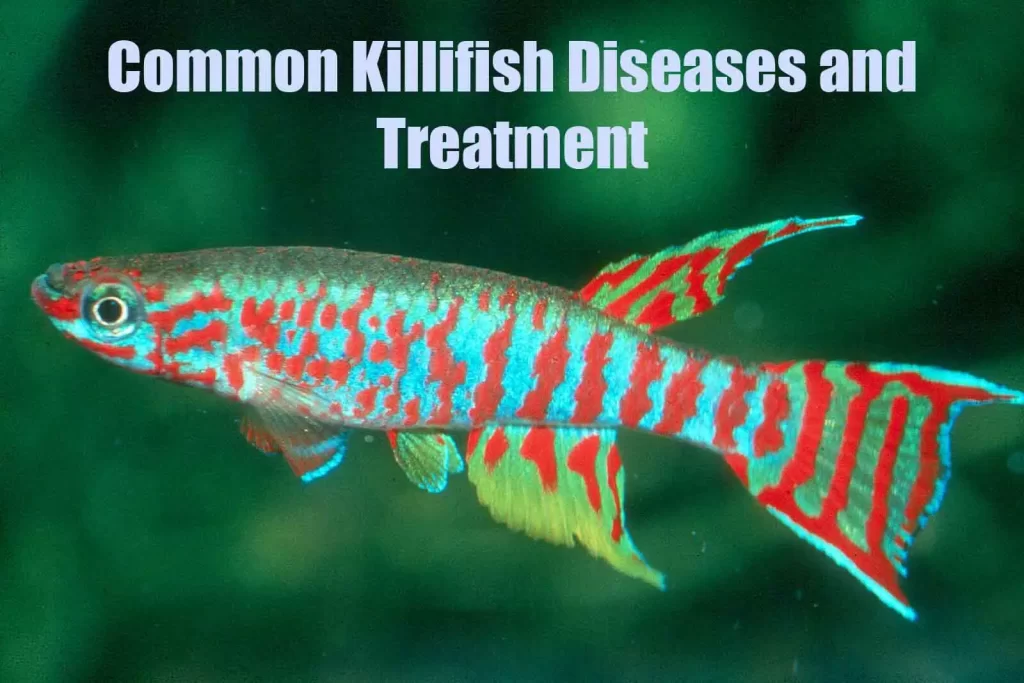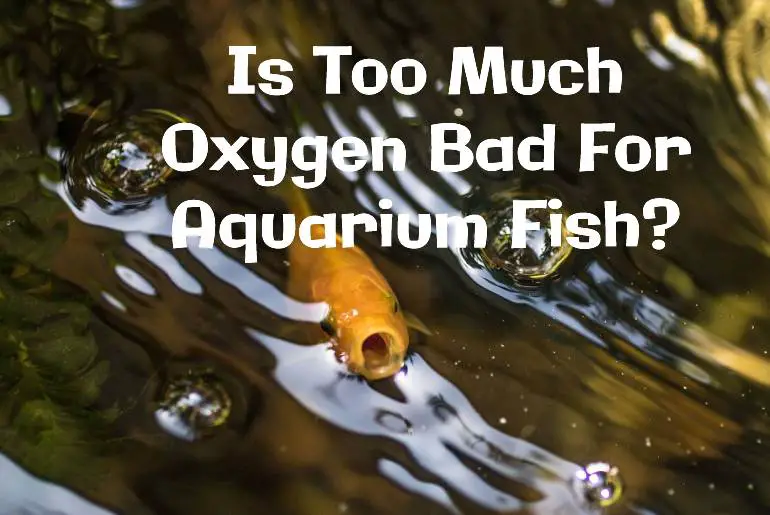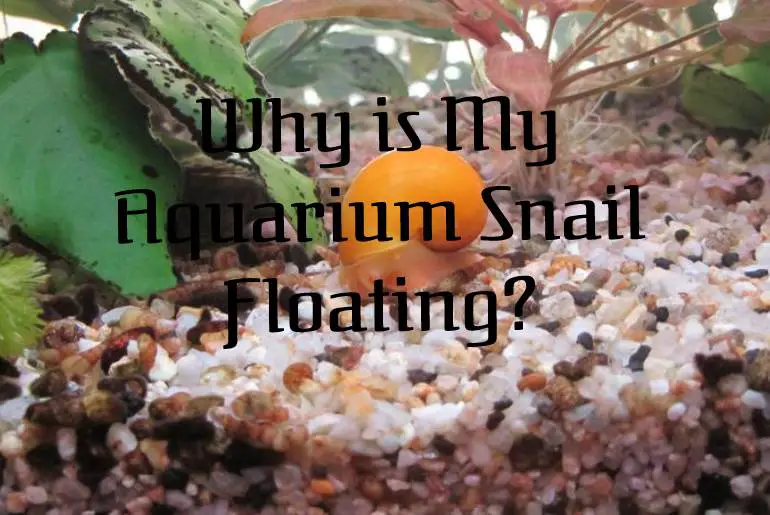Aquarists are always looking for new and interesting fish to add to their tanks, but sometimes you may not be aware of the potential problems of keeping certain fish. Angelfish fin rot is one such problem, and various factors can cause it. Do you know about the causes, treatment, and prevention of fin rot in angelfish?
Fin rot is a common angelfish problem due to poor water quality, high temperature, or bacterial infection. The fins will appear ragged and may have black or white patches. If the disease is left untreated, it can spread to the body and cause death.
Therefore, it is vital to treat fin rot in angelfish as soon as possible. The best way to do this is to identify and address the root cause. Today, we will discuss everything you need about Angelfish fin rot.
Can Angelfish Die Due To Fin Rot?
Yes, Angelfish can die from Fin Rot if the infection is left untreated or if the fish does not have a strong enough immune system to fight off the infection. Angelfish are also susceptible to secondary infections, which can be fatal, like septicemia or bacterial gill disease.
Will The Fins Of Angelfish Regrow?
The fins of Angelfish will regrow if the fish is treated for Fin Rot in a timely manner and the infection does not spread to the rest of the body. The new fins may not be as long or as beautiful as the original fins, but they will eventually grow back.
Is Fin Rot Of Angelfish Contagious?
Yes, Angelfish Fin Rot is highly contagious and can quickly spread through a tank if not treated. It is important to isolate any fish that are showing signs of Fin Rot and treat them immediately. Angelfish with fin rot are also susceptible to other fish diseases, so it is important to keep a close eye on your fish and quarantine any new fish before adding them to the tank.
Fin Rot In Angelfish
There’s no denying that angelfish are among the most beautiful fish in a freshwater aquarium. Usually, this fish’s variety of colors and flowing fins stunned everyone. I, myself, was hypnotized by their beauty and elegance the first time I ever saw them. So, when one of my angelfish developed fin rot, I was heartbroken.
Fin rot is a common disease in freshwater fish and can affect any type of fish. It’s caused by bacteria that invade and start to eat away at a fish’s fins and tail. Mostly, fin rot is a heartbreaking disease that damages the beauty of a fish.
Even the color and glow of your fish will fade as the disease progresses. So, your aquarium will look dull and lifeless if your angelfish fin rot. If you want a beautiful and healthy aquarium, you need to be aware of the causes of fin rot and how to treat it.
However, before heading into the cause and treatment of fin rot. Let us first understand why fin rot is so common in Angelfish.
Is Fin Rot Common In Angelfish? Why?
Yes, angelfish is very susceptible to fin rot. Though angelfish can resist some fluctuations in their water condition, your angelfish aren’t the hardiest fish, and even a small change in water quality can lead to health problems like fin rot.
In addition to this, many species of angelfish are interbred, which can lead to genetic defects that make them even more susceptible to diseases. It is commonly believed that the angelfish fins are an especially delicate area. Therefore, the fin can get affected by the slightest of things, whether it be a sharp substrate, poor water quality, or even other tank mates nipping at their fins.
Furthermore, Angelfish are also known to be very sensitive to medications used to treat diseases, so care must be taken even when using them.
But do you know the reasons behind fin rot in Angelfish?
What Causes Fin Rot In Angelfish?
Although fin rot is common in angelfish, it doesn’t occur by itself. Many times I also notice that only a few of my angels are suffering from fin rot and others are healthy. So, even in the same condition, fish might react differently to the same disease.
The most important thing is to find out the root cause of fin rot and treat it accordingly. Here are some possible causes:
Poor Water Quality
Being a freshwater fish, angelfish need clean and well-filtered water to stay healthy. Usually, polluted water might house various bacteria and parasites, which might infect your angels. In addition to this, the amount of ammonia and nitrite in water also plays an important role in fish health.
If the concentration of ammonia or nitrite is high, it might damage your fish’s fins and scales, which can lead to fin rot.
Parasitic Infection
Parasites are one of the most common causes of fin rot in angelfish. These parasites might enter the fish through open wounds or damaged fins. Once these parasites enter the fish, they start feeding on the blood and tissue, which can lead to fin rot.
If the water is polluted or has a high concentration of ammonia or nitrite, the fish might be more susceptible to various bacteria like Pseudomonas, Aeromonas, and Vibrio Bacteria. Generally, Angelfish fin rot caused by these bacteria usually starts as a white or grayish growth on the fins. If left untreated, it can spread to the entire fin and even to the body.
Inadequate Diet
A well-balanced diet is necessary for the proper growth and development of angelfish. If angelfish don’t get enough nutrients, it might affect their immune system and make them susceptible to diseases. Angelfish require a diet rich in protein and vitamin C to stay healthy.
Usually, angelfish are prone to fights if these fish are hungry and don’t get enough food. In such a situation, the fins might get damaged, which can lead to fin rot.
Stress
Just like humans, even fish suffer from stress. Angelfish are generally very sensitive, and any changes in their environment can cause stress. For example, changing the water parameters or adding new fish to the tank can be stressful for them.
If the fish are stressed, it might affect their immune system and make them susceptible to diseases. In addition to this, stress can also cause physical damage to the fins, which can lead to fin rot. The most common stressing causing factors are:
- High-intensity lights
- Loud noises
- Inadequate water parameters
- Overcrowding
- Sudden changes in temperature
Physical Injuries
As mentioned above, the fins of angelfish are very delicate and prone to physical damage. Angelfish are very active and playful, so your angelfish might often bump into things in the tank, which can damage their fins. Moreover, sometimes the fins might get caught in the filter or other objects in the tank, which can also lead to fin rot.
In addition to this, angelfish are aggressive in nature and often fight with each other. During these fights, the fins might get damaged. Also, sometimes the owners fail to realize the correct substrate for their tank, which can also cause physical injuries to the fins.
Fluctuating Water Parameters
Sudden changes in water parameters can also be stressful for fish and might lead to diseases like fin rot. Angelfish are very sensitive to changes in pH and temperature, so it’s important to maintain a stable environment in the tank.
For example, if the pH level suddenly drops or rises, it can damage the fins and make them susceptible to bacteria and parasites. Similarly, sudden changes in temperature can also be stressful for fish and might lead to diseases.
Overcrowding
Overcrowding is one of the most common problems in fish tanks. Angelfish are very active and need a lot of space to swim. If the tank is overcrowded, it might lead to various problems like aggression, stress, and physical injuries.
An overcrowded tank can also cause poor water quality, which can lead to fin rot.
Now that you know the possible causes of Angelfish fin rot, let’s take a look at the signs and symptoms.
What Does Fin Rot Look Like In Angelfish?
Generally, fin rot has very prominent symptoms that are easy to spot. However, sometimes aquarists don’t realize their fish have fin rot until it’s too late. Angelfish with fin rot may exhibit any or all of the following symptoms:
- loss of fins, especially the tail
- frayed or ragged fins
- redness, inflammation, or bleeding at the base of the fins
- white spots on the fins (if caused by a bacterial infection)
- discoloration of fin tissue
- excessive mucus production
- unhealthy appearance
If you notice any of these symptoms in your Angelfish, it’s important to take action immediately. Fin rot can spread quickly and be fatal if left untreated. If the fin rot turns severe, you might as well notice:
- Abdominal ulcers
- Hemorrhagic septicemia
- Loss of appetite
- Exophthalmia (bulging eyes)
These are some of the most severe symptoms of fin rot and can lead to death. Therefore, it’s important to take action as soon as you notice any signs or symptoms.
Types Of Fin Rot In Angelfish
Before moving on to the treatment, I think it is very necessary for you to understand the types of fin rot that your angelfish might face. Since I didn’t have this knowledge in my beginner years, I had to face a lot of problems and lose many of my beloved fish. So, here are the three types of fin rot that your angelfish might face:
Mild Fin Rot
The mild fin rot shows very less symptoms and can be cured quite easily if treated in the early stages. Angelfish with mild fin rot will have slightly discolored fins, and you might notice a few holes in their fins. In addition to this, the fins will still be dark, showing only mild redness.
Moderate Fin Rot
The moderate fin rot shows very severe symptoms and is hard to cure. Angelfish with moderate fin rot will have major holes in their fins, which will eventually lead to the loss of the whole fin. The fins will be completely discolored and will show a lot of redness. Even the fins of your angelfish will start slipping off when you touch them.
Severe Fin Rot
This is the stage where most angelfish keepers lose their fish. Severe fin rot is very dangerous, and if not treated on time, it will lead to the death of your fish. Angelfish with severe fin rot will have completely discolored fins with large holes in them. The fins might also start to shred, and you might see your fish swimming with only stumps.
In addition to this, the severe fin rot also causes a lot of stress to the angelfish, which makes them more susceptible to other diseases. So, if you notice any of these symptoms in your fish, it is very important that you start the treatment immediately.
How To Treat Fin Rot In Angelfish?
Fin rot is a fatal health issue in angelfish. If you fail to treat it on time, your beloved pet will eventually die. The good news is that fin rot can be treated; here are a few methods that you can use to treat fin rot in your angelfish:
Use Of Antibiotics
Most commonly, fin rots occur due to infections. Bacteria are the main culprits behind fin rot. Angelfish are highly susceptible to infections because of their weakened immune system. The good news is that infections can be treated with antibiotics.
There are a variety of antibiotics available on the market. However, you should always consult a veterinarian before using any antibiotic on your fish. Some of the antibiotics that are commonly used to treat fin rot include Chloramphenicol, Tetracycline, Oxytetracycline, Maracyn, and Kanamycin.
You can also use a combination of two or more antibiotics to treat fin rot. For example, you can use Chloramphenicol and Oxytetracycline together. This will help you get rid of the infection quickly.
Use Aquarium Salts
Aquarium salts are another effective remedy for fin rot. Salts help to increase the concentration of electrolytes in the water, which is beneficial for the fish. In addition, aquarium salt also has antiseptic and antibacterial properties that can help to kill the bacteria causing fin rot.
To use aquarium salt, you need to add two tablespoons of salt for every gallon of water. You can also add a little bit of aquarium salt to the food that you feed your fish.
Separate The Fish
If you have more than one fish in your aquarium, it’s important that you separate the sick fish from the healthy ones. This is because fin rot is highly contagious and can spread quickly from one fish to another. You should also clean the tank thoroughly before adding new fish to it. This will help prevent the spread of infection.
Increase Oxygen Levels
Oxygen is essential for the survival of fish. Angelfish are no exception. If you notice that your fish is gasping for air, it’s a sign that the oxygen levels in the water are low. You can increase the oxygen levels by adding an air pump to your aquarium. This will help improve the quality of the water and make it easier for your fish to breathe.
Change The Water
One of the simplest and most effective ways to treat fin rot is to change the water in your aquarium. This will help get rid of the bacteria that are causing the infection.
You should also clean the filter and other equipment in your tank to prevent the spread of infection.
Cut Off The Affected Areas
In some cases, the affected areas of the fins may need to be cut off. This is usually done if the infection is severe and has spread to a large area.
You should only consider this option as a last resort. Angelfish are known to regenerate their fins, so there’s a good chance that your fish will be able to regrow its fins after the affected areas have been cut off.
These are just some of the methods that you can use to treat fin rot in your angelfish. If you notice any signs of infection, it’s important that you take action immediately. The sooner you treat the infection, the better the chances of your fish surviving.
How Long Does It Take For Fin Rot In Angelfish To Heal?
The speed of fin rot healing in Angelfish varies depending on the severity of the infection. A mild case of fin rot can heal within a few days, while a more severe infection can take several weeks to heal. If left untreated, Angelfish fin rot can be fatal.
In general, mild to moderate fin rot can heal in around 4 to 5 days with proper treatment. However, a severe case of Angelfish fin rot can take up to several weeks to heal. But since the healing process takes time, how would you know that the treatment that you are using for your fish is correct?
How To Know Fin Rot In Angelfish Is Healing?
If you are an aquarist, this is a very important topic. Angelfish are one of the most popular freshwater fish. Angelfish are very beautiful and come in a variety of colors. Angelfish are also very sensitive to their environment.
After knowing all these things and even the treatment measures, some aquarists fail to recognize when the Angelfish fins are healing. Healing signs are vital and should be looked at so that you can decide whether to continue the treatment or not.
After my five years of experience in angelfish, the healing signs of fin rot that I have observed are as follows:
- The Angelfish fins will start to look less ragged, and the edges will become less frayed.
- The white spots that were once on the fins will start to fade away.
- The Angelfish’s appetite will improve, and your angelfish will become more active.
- The color of your Angelfish will also start to become more vibrant.
If you see any of these signs, it is a good indication that your Angelfish’s fins are healing. Continue with the treatment for a few more days to be sure. Then you can start to slowly reduce the frequency of treatments.
How To Prevent Fin Rot In Angelfish?
As we all know that prevention is far better than cure. So, it is better to take some precautionary measures to prevent your Angelfish from Fin Rot. Some of the methods are as follows:-
Maintaining A Clean And Hygienic Aquarium
Angelfish produce a lot of waste, and these fish are also very sensitive to water quality. So, it is very important to maintain a clean and hygienic aquarium. You should do a partial water change of 20-30% every week. This will help to keep the water quality in check and also remove all the waste from the aquarium.
You should also clean the aquarium filter on a regular basis. A clogged filter can lead to a build-up of toxins in the water, which can be harmful to Angelfish.
Maintaining The Water Quality
It is very important to maintain the water quality in the aquarium. You should test the water on a weekly basis and make sure that the ammonia, nitrite, and nitrate levels are all within the safe range. Always use a good quality water conditioner to remove all the harmful chemicals from the water.
Moreover, the water parameters should be as follows:
- pH level: between 6.8-7.8
- Hardness: 54-145 ppm
- Ammonia level: 0 ppm
- Nitrite level: 0 ppm
- Nitrate level: below 40 ppm
- Water temperature: 75-84 degrees Fahrenheit.
This will help to keep your Angelfish healthy and prevent them from getting sick.
Providing A Balanced Diet
A balanced diet is very important for Angelfish. You should give them a variety of foods that contain all the necessary nutrients. Some of the best food for Angelfish are bloodworms, brine shrimp, daphnia, and tubifex worms. You can also give them Angelfish pellets or flakes.
In general, you should also feed them vegetables such as lettuce, spinach, and zucchini. This will provide them with the necessary vitamins and minerals. I usually feed my angels twice a day. But you can also feed them once a day. Just make sure that they are getting enough food.
However, one thing that you must remember is to not overfeed them. Always remove the uneaten food from the aquarium after a few minutes.
- Omega one pellets
- Ocean Nutrition Instant Baby Brine Shrimp 0.7-Ounces (20 Grams) Jar
- Omega One Freeze-Dried Blood Worms, 0.96 oz
- 200 Live Daphnia by Aqua L’amourl
- Hikari Bio-Pure Freeze Dried Daphnia for Pets, 0.42-Ounce
- Hikari Tubifex Worms Fish Food (0.7 oz.) [Set of 2]
Avoid Overcrowding
Angelfish are very sensitive to water quality, and they are also very territorial. So, it is very important to avoid overcrowding in the aquarium. Always keep Angelfish in an aquarium that is at least 55 gallons. This will help to keep them healthy and prevent them from getting sick.
Moreover, a tank full of hiding spaces and plants will also help to reduce stress in Angelfish. There will be lesser chances of bumping into each other and getting injured. As a result, this will keep your angelfish happy and calm.
Add Fast-Growing Plants And Proper Substrates
Plants are very important in an Angelfish aquarium. Moreover, plants help to keep the water quality in check and also provide hiding places for Angelfish. Some of the best plants for Angelfish are Java Fern, Hornwort, and Anacharis.
Find out other benefits of aquarium plants here.
You should also add a good quality substrate to the aquarium. This will help to keep the Angelfish healthy and also prevent them from getting sick. Some of the best substrates for Angelfish are sand, gravel, and clay.
Some gravel options:
Some sand options:
- Carib Sea ACS05820 Super Natural Moonlight Sand for Aquarium, 5-Pound
- Carib Sea ACS05840 Super Naturals Crystal River Sand for Aquarium, 5-Pound
Always Choose Correct Tankmates
Angelfish are very territorial, and these fish can be aggressive towards other fish. So, it is very important to choose their tankmates carefully. Some of the best tankmates for Angelfish are Tetras, Guppies, and Mollies. These fish are peaceful, and they will not bother Angelfish.
You should also avoid keeping Angelfish with other aggressive fish such as Cichlids and Sharks. This will only make the Angelfish more stressed, and it can lead to aggression.
Using Salts And Hydrogen Peroxide
You can also use salts and hydrogen peroxide to treat Angelfish fin rot. Just add a teaspoon of salt per gallon of water. This will help to kill the bacteria and prevent the infection from spreading.
Moreover, you can also add mL of hydrogen peroxide per gallon of water. This will help to kill the bacteria and also prevent the infection from spreading.
All these are the methods that you can use to prevent fin rot in Angelfish. Just make sure to follow all the methods properly and you will not have any problems.
Some brands that you can use are:
- API AQUARIUM SALT Freshwater Aquarium Salt 16-Ounce Box
- Instant Ocean Reef Crystals Reef Salt For 160 Gallons, Enriched Formulation For aquariums
- Epsoak Epsom Salt 19 lb. Bulk Bag Magnesium Sulfate USP
- Amazon Brand – Solimo Epsom Salt Soak, Magnesium Sulfate USP, 8 Pound
FAQs
Can Humans Suffer From Fin Rot?
No, Angelfish Fin Rot is not contagious to humans. However, it is important to wash your hands after handling any fish that may be infected with the disease.
Is Fin Rot Painful For Angelfish?
Yes, Angelfish Fin Rot can be painful for the fish as the infection eats away at the fins. The fish may also have trouble swimming and may become lethargic. If you notice any of these signs in your fish, it is important to seek treatment immediately.
Can I Treat Fin Rot Without Seeking Help From A Professional?
Yes, you can treat Angelfish Fin Rot with a variety of over-the-counter medications. However, it is important to correctly identify the disease and not confuse it with other fish diseases. If you are unsure of how to treat the disease, it is always best to seek help from a professional. But if you are confident in your ability to treat the disease, you can find a variety of Angelfish Fin Rot treatments online or at your local pet store.
What Are The Chances Of Angelfish Surviving Fin Rot?
The chances of Angelfish surviving Fin Rot are good if the disease is caught early and treated correctly. However, Angelfish are susceptible to secondary infections, which can be fatal. It is important to seek treatment immediately if you notice any signs of Fin Rot in your fish.
Conclusion
Wrapping up, Angelfish Fin Rot can be a serious problem for Angelfishkeepers. However, by understanding the causes and implementing some basic preventative measures, you can help your Angelfish live a long and healthy life.
If you have any questions or comments about Angelfish Fin Rot, please leave them in the comment section below. Happy Fishkeeping!






